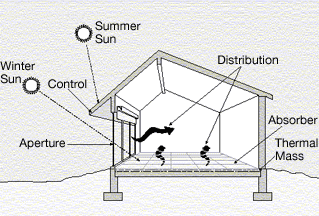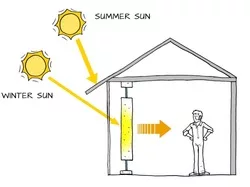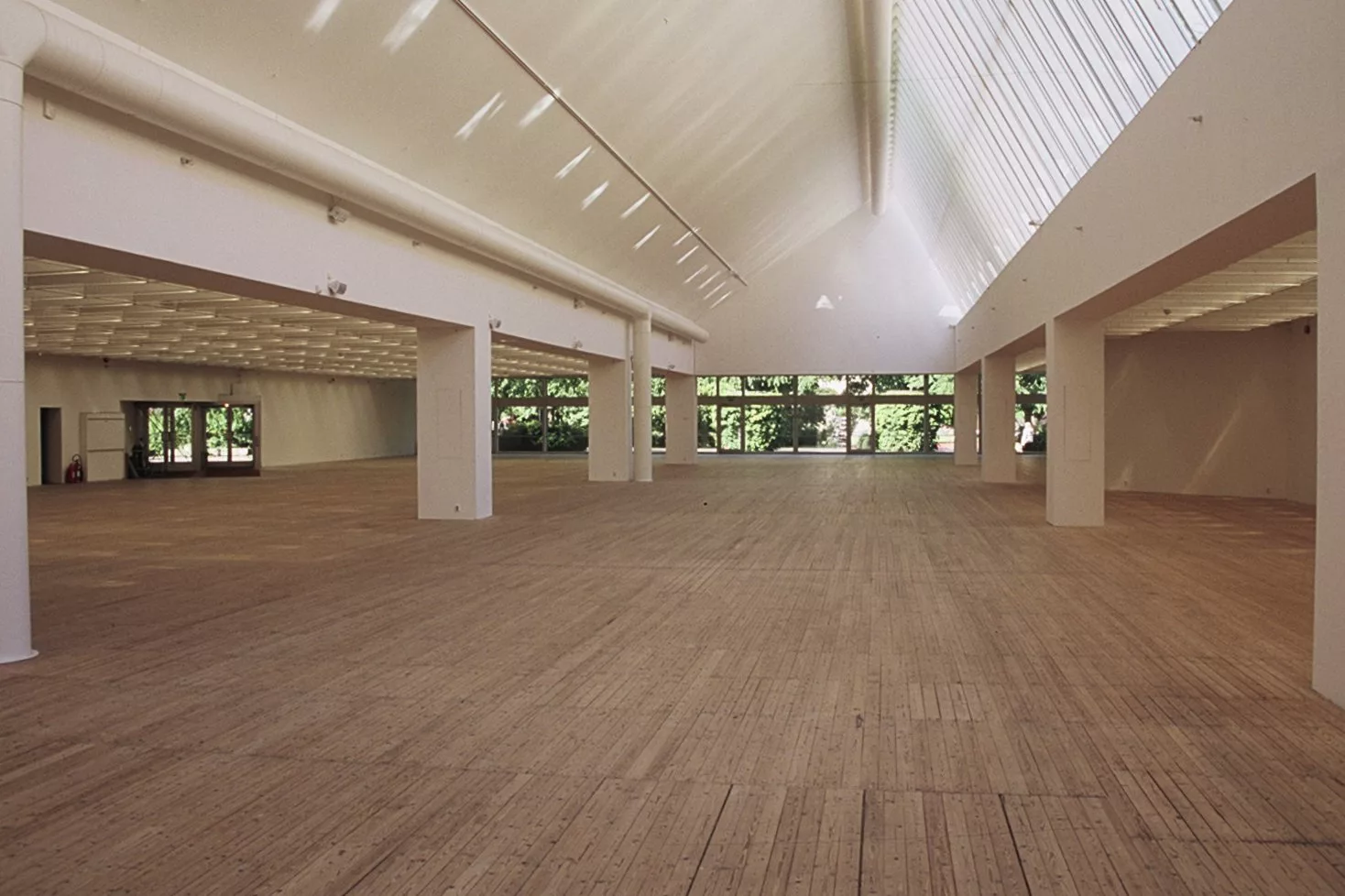There’s many ways to capture the energy of the sun to help heat a building. This can be often be done by simply thinking about the path of the sun. It may have no cost increase , and can potentially have dramatic savings on utility costs.
The primary way to capture the sun’s heat is via south facing windows. Large South Facing windows can allow a room to capture that solar gain. The next step is to hold onto that heat. One way of keeping the heat in is by insulation. Proper insulation and making sure cracks are sealed is important for any building.
Another effective way to hold onto that heat is via thermal mass. Concrete floors are the best example of this mass. The sun can heat the concrete floors, and when the sun sets and the outside temperatures drop, the concrete will want to hold onto that heat and slowly release it, when you need it most!
 Diagram of Simple Passive Solar Concepts
Diagram of Simple Passive Solar Concepts
Now, what about the summer? We don’t want to have the sun heating our building when its 90 degrees out. The primary solution is overhangs. In summer, the sun is at a much high angle in the sky. Properly sized and places overhangs will block the sun from entering windows in Summer, but allow it in in winter when the angle is much lower in the sky. There’s many other ways to achieve this, such as shutters, blinds, etc.
Depending on your specific location, passive solar may need to be supplemented with more conventional heating methods, but it will certainly help ease the need for conventional energy uses!
We can also use trees to help block the sun in summer, but harness it in the winter. Deciduous trees (leaves fall off in winter) can be planted along the South Side of a building to block hot summer sun, and when the leaves fall off, they allow the rays through. They can also help block solar heat gains to walls and roofs in summer as well!
There is also the concept of a trombe wall. This is a thermal mass placed a few feet away from windows, creating a sort of room to capture all the solar gain, and then the heat is transferred from the mass wall and air space via natural or mechanical means.
 Example of a Trombe Wall
Example of a Trombe Wall
It would seem obvious that the sun can provide us natural light and reduce the need for daytime artificial lighting, but many buildings are not designed to take advantage of this.
One of the big problems with natural lighting is that it can often provide too much light and glare. One way to mitigate this is by having North facing windows, or North facing skylights. This lets the best indirect light in. Care should be taken to not have too much glazing and loss of insulation. While well insulated glazing should be used for the North side, glass is still usually worse of an insulator than other materials. There is a sort of balance between all these factors that should be considered.

Example of North Facing Skylights for indirect lighting
Another concept of natural lighting is the light shelf. This is usually located near a window, and provides a shelf for light to bounce off of and reach further into a room. These can provide some great natural light.
Depending on the site, passive solar concepts can’t realistically always be used, but should be thought about as much as possible! With a little modification to the design of our buildings, we can potentially save big bucks on utilities, and use less non-renewable resources!
Article by:
Matthew Taylor-Rennert
Dalkita Architecture & Construction